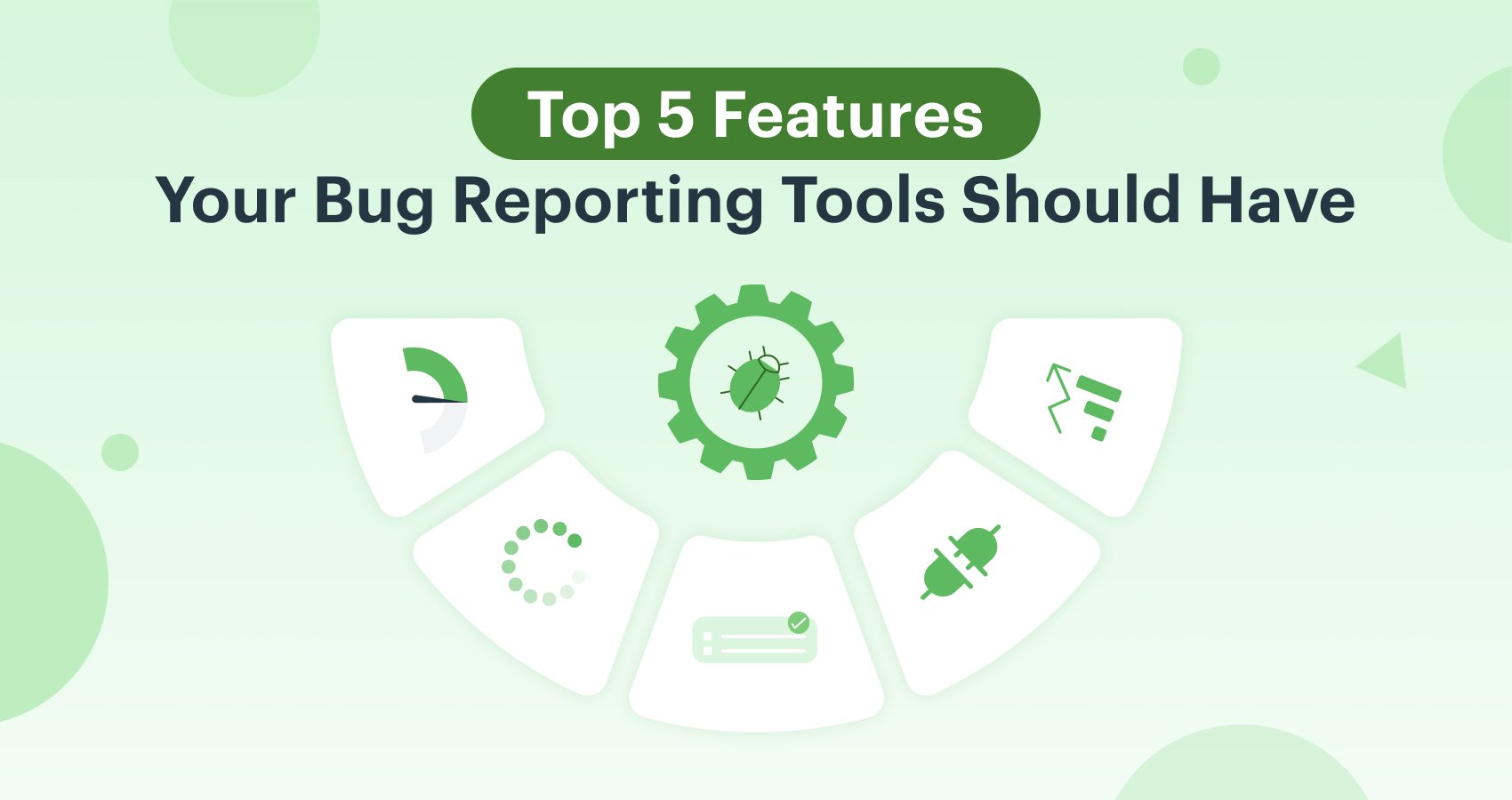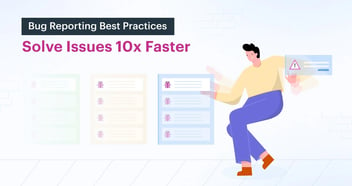For every software product, the dev team has to deal with loads of bugs that can impact user experience. In addition to the numerous bugs identified during testing, many more defects are uncovered as customers use the product. To deal with a high volume of defects, there is a need for an efficient bug tracking tool. Such a tool should have features that automate processes, simplify tasks, and investigate bugs that impact the product experience.
A bug reporting and tracking tool is a centralized platform where all reported software defects are recorded, resolved and updated. Developers, analysts, and testers need a solution that helps them deliver products that are as bug-free products as possible.
5 Key Features Your Bug Reporting Tool Should Have
In its simplest form, bug tracking software is a tool that automates the process of tracking and managing bugs in the product. Given the high volume of bugs that development teams have to deal with, the process of managing bugs can be a little complicated without these must-have features.

Here are five key features that every bug reporting tool should have.
Bug prioritization
When bugs are identified or reported, they need to be accurately assessed and categorized accordingly. The purpose of this step is to determine the impact of these bugs on your product and to determine the order in which they should be fixed. Bugs can be categorized as low, medium, high, or critical. Low priority bugs are defects that have no significant impact on the product’s core feature or only affect a small percentage of users. On the other end of the spectrum are critical bugs that must be attended to with immediate effect because they make the software unusable for the majority of users.
Understanding the severity of bugs will make it easier to prioritize them accordingly and assign resources towards their resolution. Your bug tracking software should make it easy to collect as much information as possible about reported bugs and prioritize them accordingly.
Tracking status
This is perhaps the most essential feature every bug tracking software should have. Considering the volume of bugs that dev teams have to deal with, keeping track of the status of each bug is important. Once a defect has been identified and recorded, your bug tracking tool should help keep track of it until it is finally resolved (regardless of their priority level). Every bug tracking software should have a robust dashboard that lists issues and clearly indicates their current status at every point in time.
This is particularly important for large teams where different members work on various tasks at every point in time. An efficient bug tracking software will give issues clearer visibility. It also ensures transparency and accountability as everyone recognizes their role within the overall framework of issue resolution.
Dynamic forms
A bug tracking software should be able to create dynamic but straightforward forms. These forms make it easier to capture data that will be valuable to the issue resolution process. For instance, when product defects are being reported externally by users, you need to be able to collect detailed information about the reported bugs. A robust reporting tool should have the ability to build custom forms that help you collect crucial information through advanced fields, arithmetic calculations, and smart fetch features.
API integrations
Issue resolution is not an isolated process. It often requires integration with different tools and a transfer of data across these different platforms. Having all your issue-related data on the same platform is better than keeping them in separate silos. While one tool cannot do it all, using an issue tracking software that offers rich API integrations makes sense, especially with the most important tools. This way, you can push requests and import data from other enterprise management software that you use actively.









